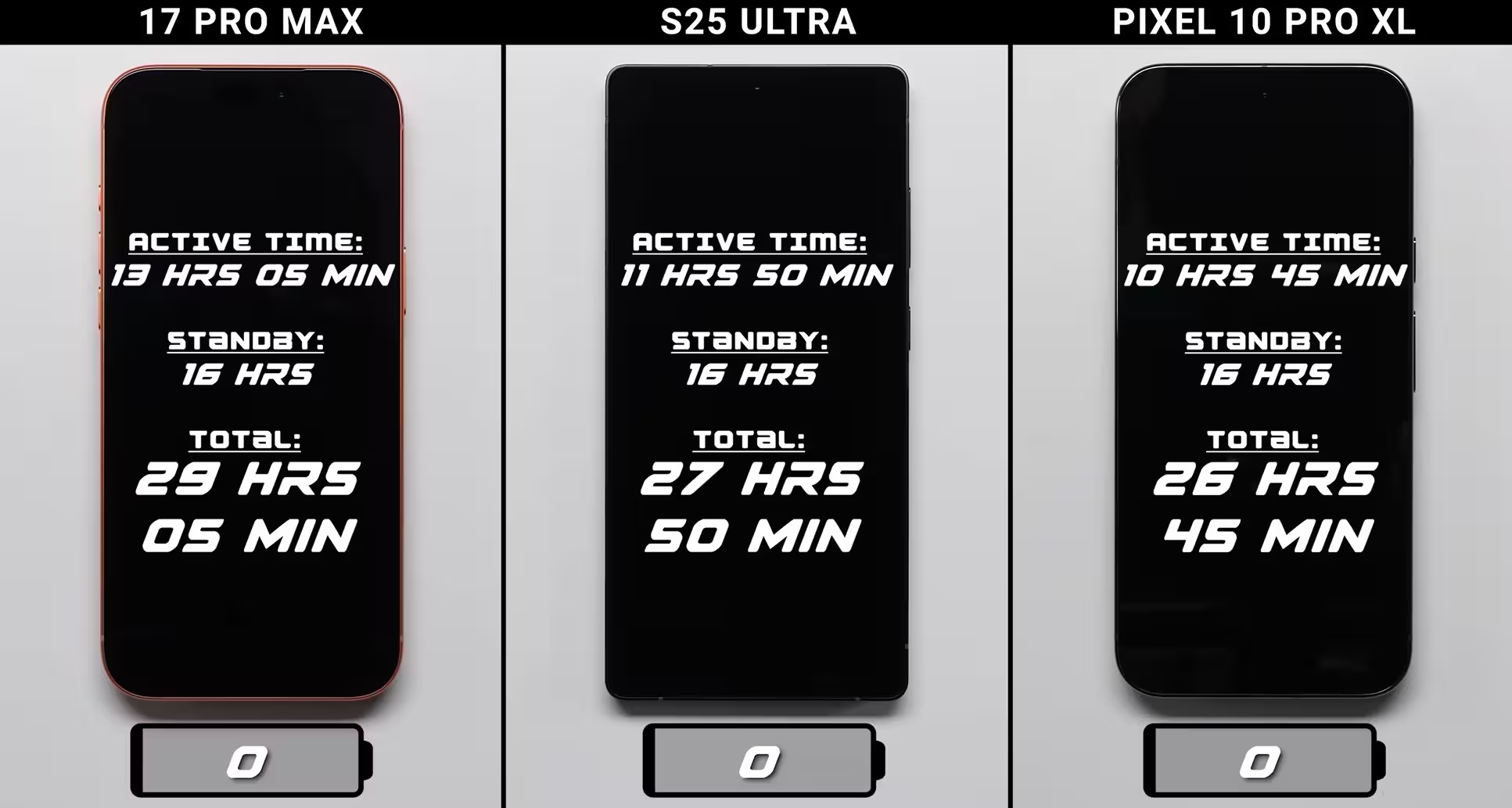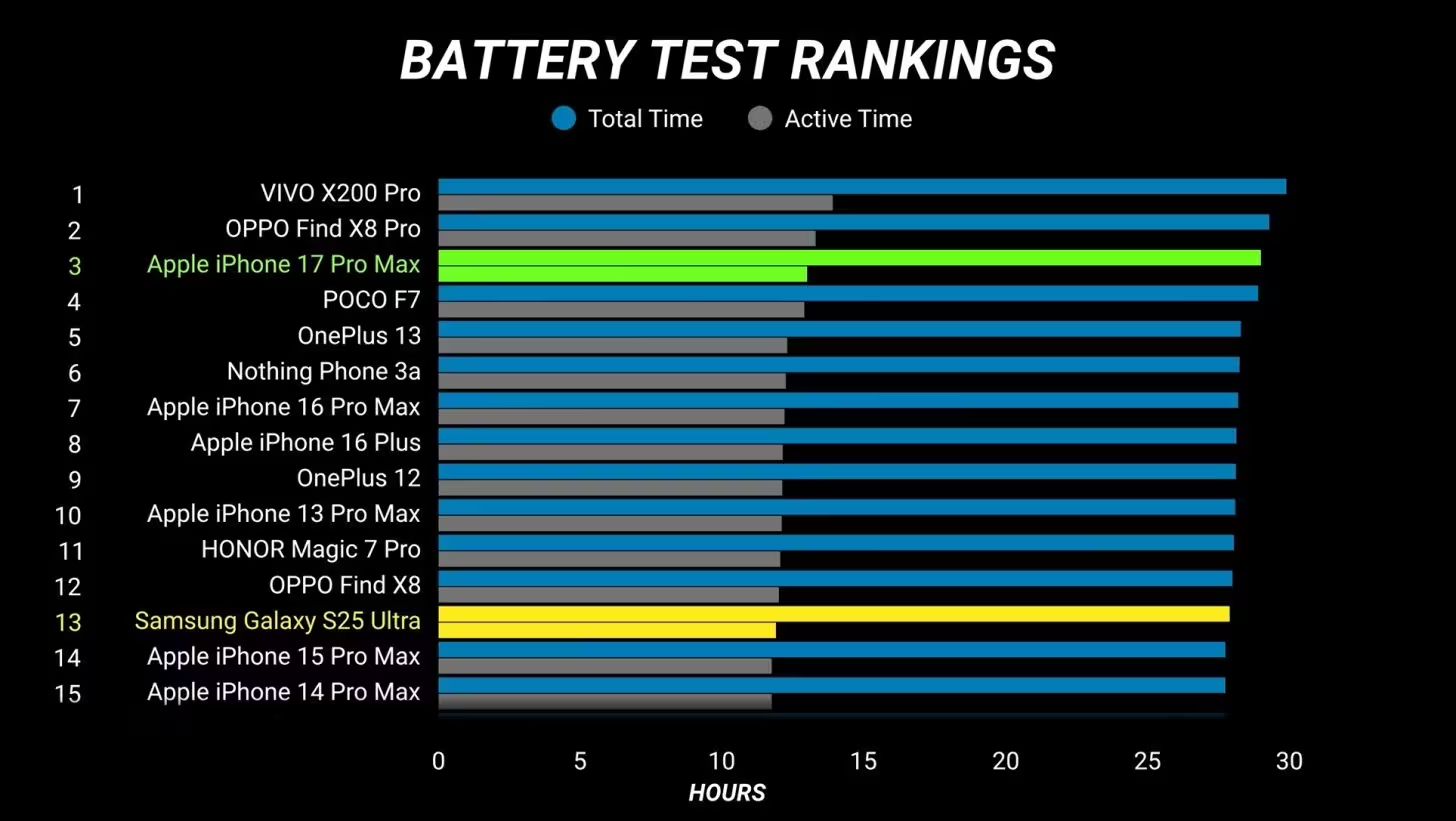4 Minutes
In a fresh showdown from PhoneBuff, Apple’s iPhone 17 Pro Max reclaimed bragging rights in a battery drain test that also included Samsung’s Galaxy S25 Ultra and Google’s Pixel 10 Pro XL. The results underscore how software tuning, SoC efficiency and display management still decide real-world endurance—not just battery capacity.
How the test played out: apps, browsing and heavy use
PhoneBuff ran the three flagships through a standardized script: app launches, web browsing, social media sessions and a brutal Snapchat segment that activates the display, Wi‑Fi, GPS and front camera simultaneously. That Snapchat round is usually the decider, and this time proved no different.
Key technical factors under stress
The three devices use different silicon: Apple’s A19 Pro, Qualcomm’s Snapdragon 8 Elite, and Google’s Tensor G5. All three flagships also sport LTPO OLED panels, allowing refresh rates to scale from 120Hz down to 1Hz to save power. How well each phone manages those transitions—and the underlying chip efficiency during sustained workloads—shaped the outcome.
Official runtimes from the PhoneBuff rundown
- iPhone 17 Pro Max — Active time: 13 hours 5 minutes; Standby: 16 hours; Total: 29 hours 5 minutes.
- Galaxy S25 Ultra — Active time: 11 hours 50 minutes; Standby: 16 hours; Total: 27 hours 50 minutes.
- Pixel 10 Pro XL — Active time: 10 hours 45 minutes; Standby: 16 hours; Total: 26 hours 45 minutes.
How big were the margins?
- iPhone 17 Pro Max outlasted the Galaxy S25 Ultra by roughly 1 hour 15 minutes.
- It ran about 2 hours 20 minutes longer than the Pixel 10 Pro XL.
- Galaxy S25 Ultra finished ahead of the Pixel by about 1 hour 5 minutes.

Why Apple won—and why Google didn’t
Apple’s lead came down to a mix of hardware efficiency and iOS power management. During web browsing and social sessions, the iPhone managed background tasks and refresh-rate scaling effectively, preserving energy in ways that added up over the long run. Samsung showed strong moments—especially in the standby and some browsing tests—suggesting its updates and tuning for the S25 Ultra are paying off. In fact, Samsung’s software polish helped the S25 family beat Apple in other speed and benchmark matchups.
Google’s Pixel 10 Pro XL was the surprise loser: despite packing the largest battery of the three, it drained fastest under heavy multimodal load. The Tensor G5’s efficiency for sustained camera and sensor-heavy tasks appears weaker here, and software-level optimizations still lag behind Apple and Samsung. In short, raw capacity isn’t enough—chip power envelopes, thermal limits and background scheduling matter a lot.

What this means for buyers
If straightforward, worry-free battery life is your priority, PhoneBuff’s result suggests the iPhone 17 Pro Max currently offers the best real-world endurance among these flagships. That said, the margins aren’t massive, and future firmware updates—especially tweaks to iOS 26 and Samsung’s ongoing refinements—could reshuffle standings. For Pixel owners, software patches and efficiency tuning will be the critical path to closing the gap.
Final takeaways
- Endurance tests still favor balanced optimization over sheer battery size.
- LTPO displays help, but how the OS and SoC coordinate refresh rates is decisive.
- Software updates can change real-world results—expect incremental gains from all vendors.
Source: wccftech

Leave a Comment